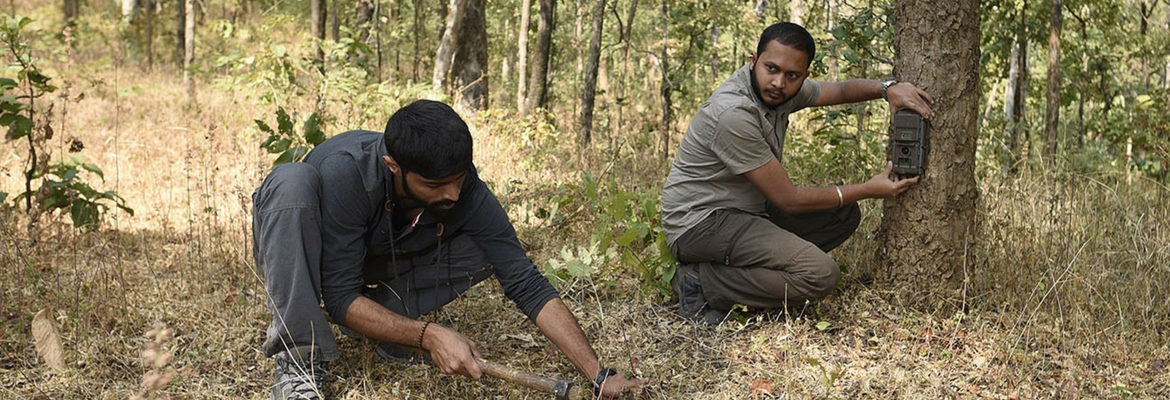WCT’s research and monitoring team routinely conducts wildlife estimations in and around Protected Areas. We train forest department staff in monitoring techniques so that they can conduct such assessments independently.
WCT has conducted surveys in the Pench, Navegaon-Nagzira, Tadoba-Andhari and Bor Tiger Reserves, Umred-Karhandla and Tipeshwar Wildlife Sanctuaries and Brahmapuri Forest Division in Maharashtra and the Pench Tiger Reserve in Madhya Pradesh.
Camera Trapping
WCT uses camera traps to count tigers and leopards, and helps the government maintain a consolidated database of large carnivores living both inside and outside Protected Areas. Camera trapping is by far the most reliable population estimation technique.
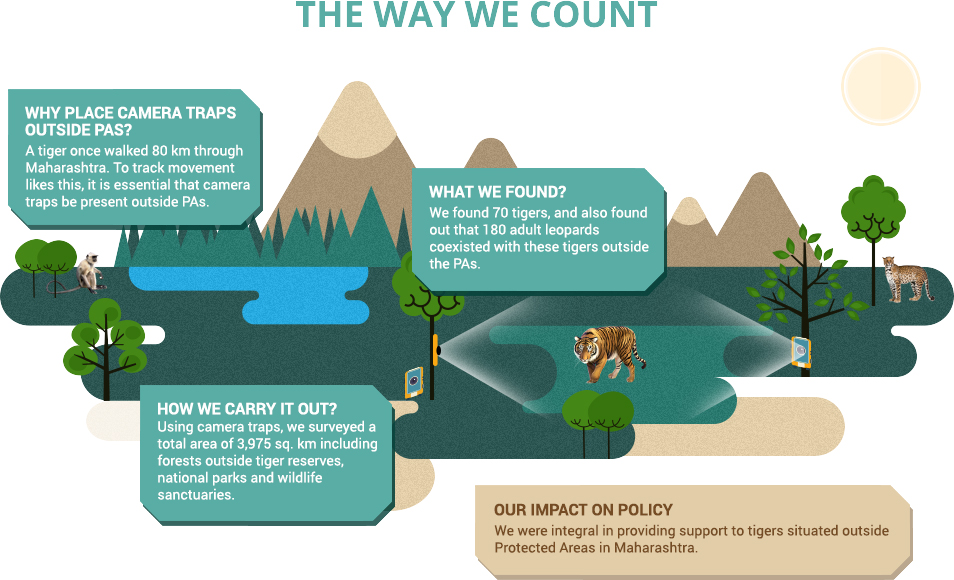
WCT has the capacity to survey about 8,000 sq. km of tiger habitat using camera traps each year. Our current work focuses on forests outside national parks and sanctuaries to make a case for conservation of tigers in the corridors.
Our camera trapping exercise also helps understand the abundance and distribution of several lesser-known species such as wolf, hyena, pangolin, ratel, rusty-spotted cat, Indian fox, otter and four-horned antelope. This information will go a long way in planning recovery programmes for these rapidly dwindling species. Another major benefit of WCT’s long-term camera trapping work is the estimation of the dependence of local communities on forest and wildlife, which in turn, assists both the government and other NGOs in planning interventions that can reduce forest degradation without hampering the livelihoods of people living in and around forests.
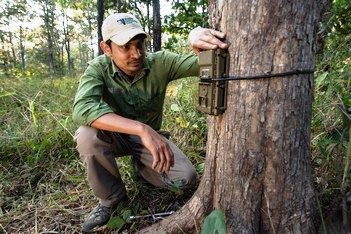
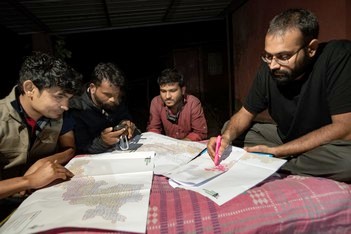
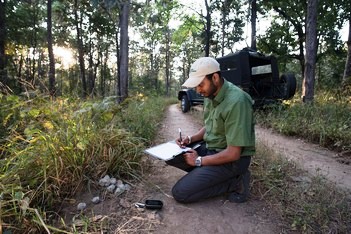
“Systematic and intensive monitoring of tiger populations inside and outside Protected Areas tells us whether WCT’s community and protection-related interventions are successful. A stable tiger population indicates a healthy ecosystem, which in turn means that local communities will be able to avail the benefits of ecosystem services such as clean water, rich soils, pollination and seed dispersal.”
Vivek Tumsare – Field Biologist
Highlights
- 55,000 trap nights per year
- 5,000 sq. km. forest area camera trapped per year
- 22,000 sq. km. of cumulative forest area camera trapped in the Central Indian Landscape (CIL)
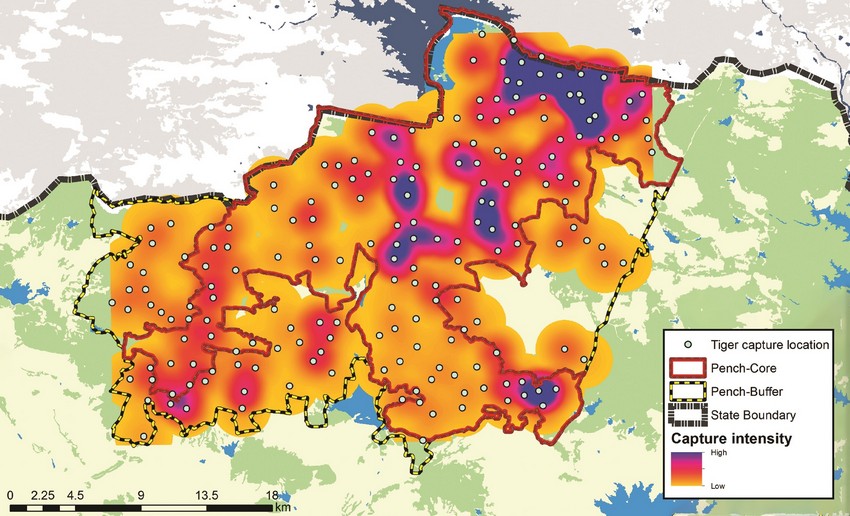
Rediscovery of Eurasian Otter
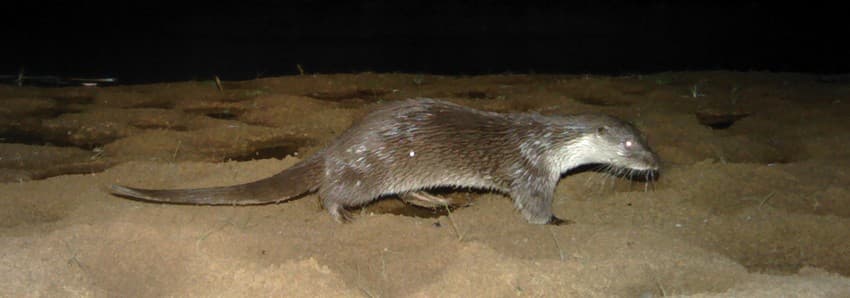
WCT’s camera trapping exercise in the Satpura Tiger Reserve led to the discovery of the Eurasian Otter Lutra lutra, one of the rarest mammals of India. The Eurasian Otter is found largely in Europe, Africa and Asia (Map). Based on historical records, it was believed to exist in India along with the two much more common otter species – Smooth-coated otter Lutrogale perspicillata and Asian small-clawed otter Amblonyx cinereus.
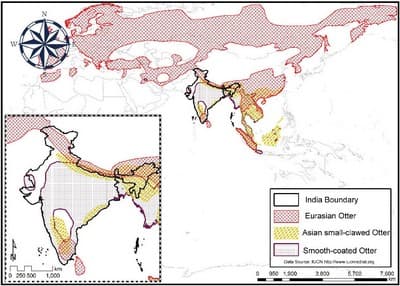
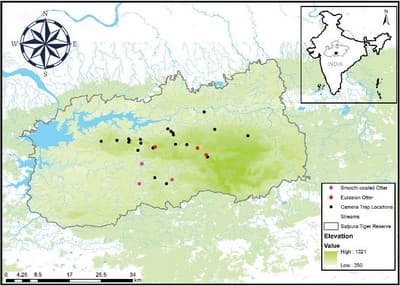
Global distribution of three otter species (above left) as per IUCN Red List indicating the absence of Eurasian otter (top) from the Central Indian Landscape. WCT study showing the presence of Eurasian otter (red dots) at higher elevations (above 550 m) and that of Smooth-coated otter (pink dots) at elevations below 500 m in Satpura Tiger Reserve, Madhya Pradesh (above right).
While the other two species are found at many places across India, the Eurasian otter, as per old records, was believed to occur in the Himalayas and in some remote high altitude streams in southern Western Ghats. However, there was no direct evidence to confirm its presence in India. According to the International Union for Conservation of Nature (IUCN), the Eurasian Otter is listed as ‘Near Threatened’. Throughout its historic range, this species has either gone extinct from several regions or its population has drastically reduced. WCT’s discovery extends its geographical range to central India and also provides the first ever photographic
evidence of its existence in India. This phenomenal finding underlines the value of large inviolate protected areas in conserving biodiversity.
Your donations support our on-ground operations, helping us meet our conservation goals.
Related Links
- Human Wildlife Interface Management
- Conservation Strategy
- India’s rising tiger figures
- Wildlife Week – Unfair Game – Big Cats Lose Prey to Bushmeat Hunters
- Education
- Connectivity Conservation
- Focus on accurate means of wildlife tracking is the need of the hour: Anish Andheria

